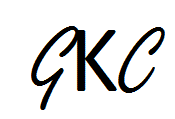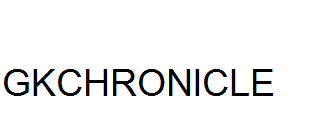Indian Polity / Indian Union and States



|

|
Reorganisation of states in India based on languages was done majorly in 1956 through the States Reorganisation Act. But Andhra State is the first state to be formed on the language basis in 1953. This was done earlier because, for a long time, Andhra Mahasabha was demanding a separate state for the Telugu speaking people in the Madras Presidency.
In June, 1948, the Constituent Assembly appointed Linguistic Provinces Commission (also called Dhar Commission) headed by S.K. Dhar along with two other members, Pannalal and Jagat Narain Lal. The Dhar Commission rejected the demand for linguistic reorganisation of states.
In December, 1948, the Central Government appointed a Committee comprising of Jawaharlal Nehru, Vallabhbhai Patel and Pattabhi Seetharamaiah,
popularly known as JVP Committee.
The JVP committee also rejected the language as basis for reorganization of states. But after
the death of Sri Potti Sriramulu on December 15, 1952, while undergoing hunger strike for 56 days, Jawaharlal Nehru announced in the
Parliament for the creation of Andhra State.
Andhra State came into existence from 1st October, 1953. Andhra Pradesh was formed
by merging Andhra State with part of Hyderabad State in 1956. Again on 2nd June, 2014, Andhra Pradesh state was divided into the states of
Telangana and Andhra Pradesh.
In 1953, the Central Government appointed a States Reorganisation Commission under the chairmanship of Fazal Ali with two other members
K.M. Panikkar and H.N. Kunzru.
Fazal Ali Commission submitted its report in the year 1955 and recommended for reorganisation of
states in India. Accordingly, the Indian Parliament enacted the States Reorganization Act, 1956.
7th Constitutional Amendment was made and accordingly, states were reorgasized. In this Amendment, PART VII of the Constitution,
which dealt with the states in PART B of the first schedule, was deleted.
With this amendment, all category states were abolished.
All the states were brought under the same roof.
The states that were there before 1956 were Assam, Bihar, Jammu and Kashmir, Odisha, Punjab, Rajasthan, Tamil Nadu, Uttar Pradesh and West Bengal.
| State Name | Year of Formation |
|---|---|
| Andhra Pradesh | 1956 |
| Karnataka | 1956 |
| Kerala | 1956 |
| Madhya Pradesh | 1956 |
| Maharashtra | 1960 |
| Gujarat | 1960 |
| Nagaland | 1963 |
| Haryana | 1966 |
| Himachal Pradesh | 1971 |
| Manipur | 1972 |
| Tripura | 1972 |
| Meghalaya | 1972 |
| Sikkim | 1975 |
| Mizoram | 1987 |
| Arunachal Pradesh | 1987 |
| Goa | 1987 |
| Chattisgarh | 2000 |
| Uttarakhand | 2000 |
| Jharkhand | 2000 |
| Telangana | 2014 |
Through the Jammu and Kashmir Reorganisation Act 2019, the state of Jammu and Kashmir was divided into two union territories namely, Ladakh and Jammu & Kashmir.
Originally, there were only 14 languages in the 8th Schedule of the Indian Constitution. Sindhi was added in 1967 by the 21st Amendment of the Constitution. Konkani, Manipuri and Nepali were added in 1992 by the 71st Amendment of the Constitution. Bodo, Dogri, Mythili and Santhali were added in 2003 by the 92nd Amendment of the Constitution.
| S. No. | Language | State or UT in which it is mainly spoken |
|---|---|---|
| 1 | Assamese | Assam |
| 2 | Bengali | West Bengal and Tripura |
| 3 | Bodo | Assam and Meghalaya |
| 4 | Dogri | Jammu & Kashmir and Himachal Pradesh |
| 5 | Gujarati | Gujarat |
| 6 | Hindi | Haryana, Himachal Pradesh, Rajasthan, Uttar Pradesh, Uttarakhand, Bihar, Jharkhand, Madhya Pradesh and Chattisgarh |
| 7 | Kannada | Karnataka |
| 8 | Kashmiri | Jammu & Kashmir |
| 9 | Konkani | Goa |
| 10 | Mythili | Bihar and Jharkhand |
| 11 | Malayalam | Kerala |
| 12 | Manipuri | Manipur |
| 13 | Marathi | Maharashtra |
| 14 | Nepali | Sikkim |
| 15 | Odia | Odisha |
| 16 | Punjabi | Punjab |
| 17 | Sanskrit | Mattur village in Shivamogga district of Karnataka |
| 18 | Santhali | Jharkhand, Odisha and West Bengal |
| 19 | Sindhi | Gujarat, Rajasthan and Madhya Pradesh |
| 20 | Tamil | Tamil Nadu |
| 21 | Telugu | Andhra Pradesh and Telangana |
| 22 | Urdu | Jammu & Kashmir, Telangana and Uttar Pradesh |